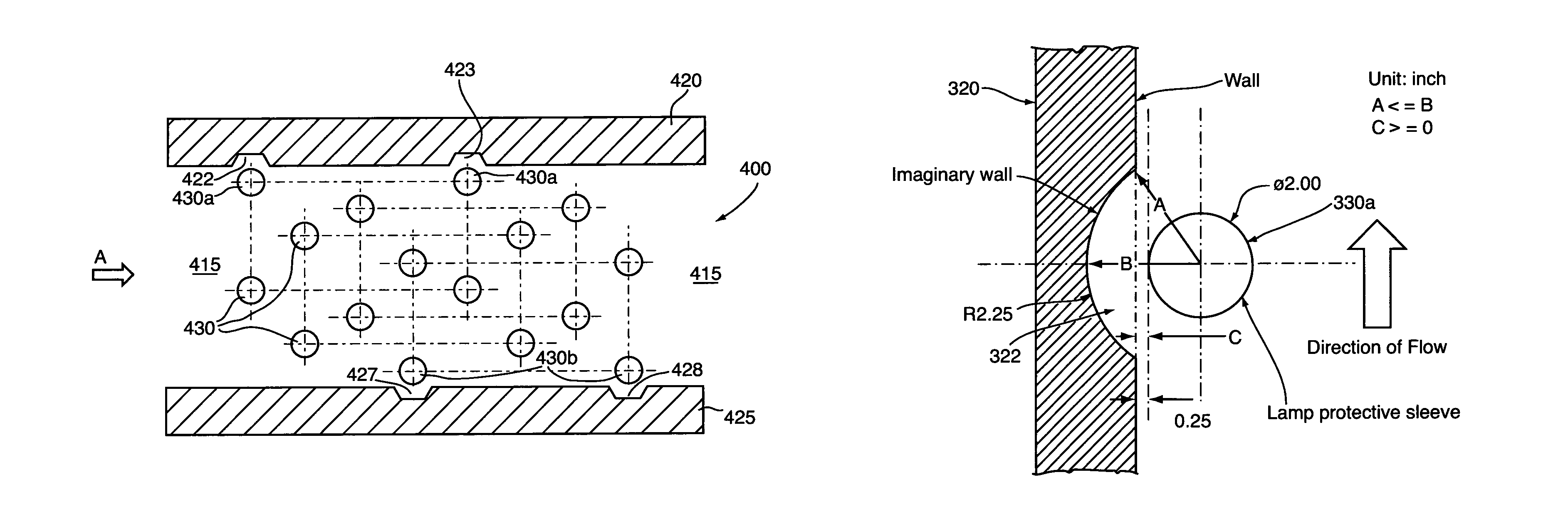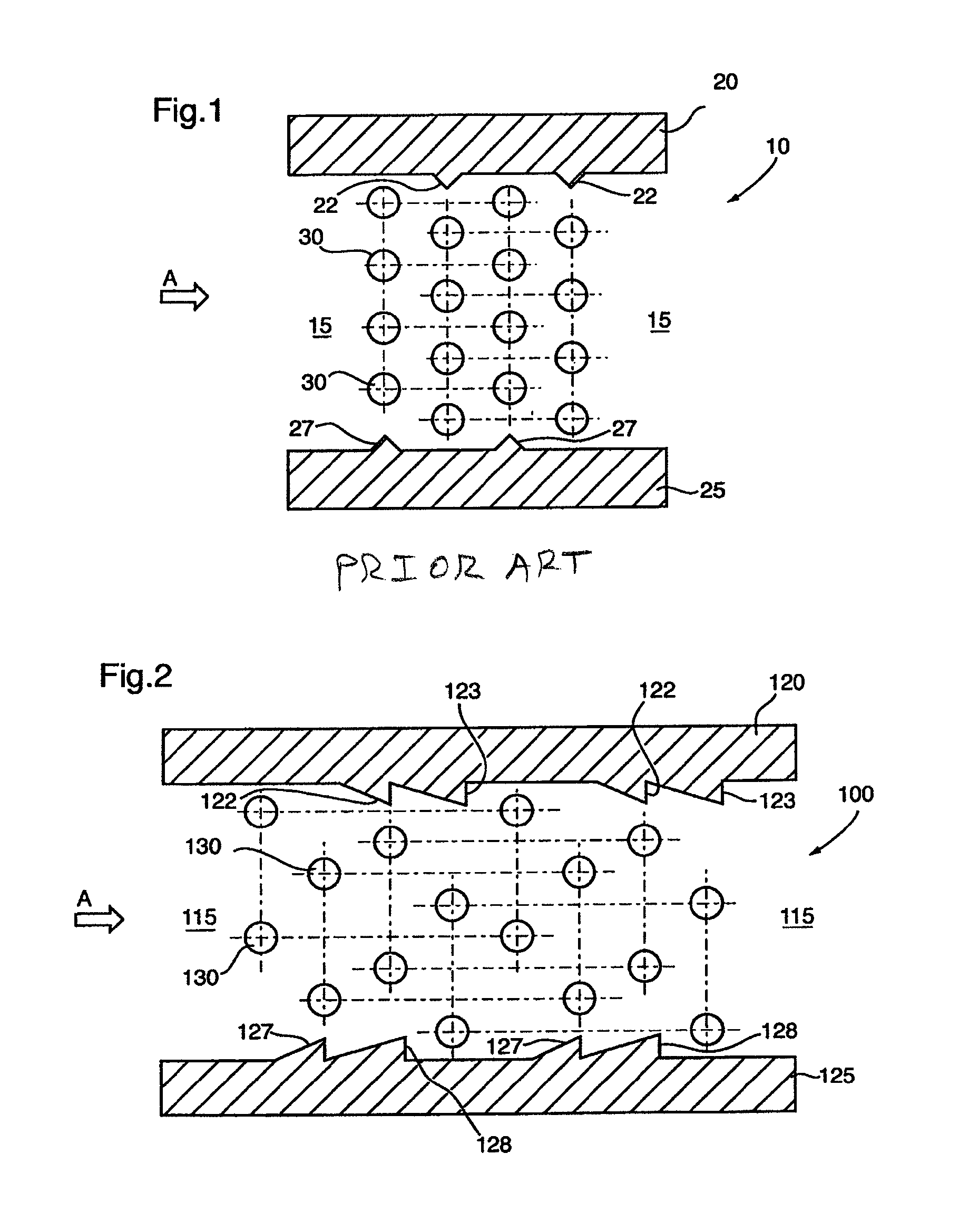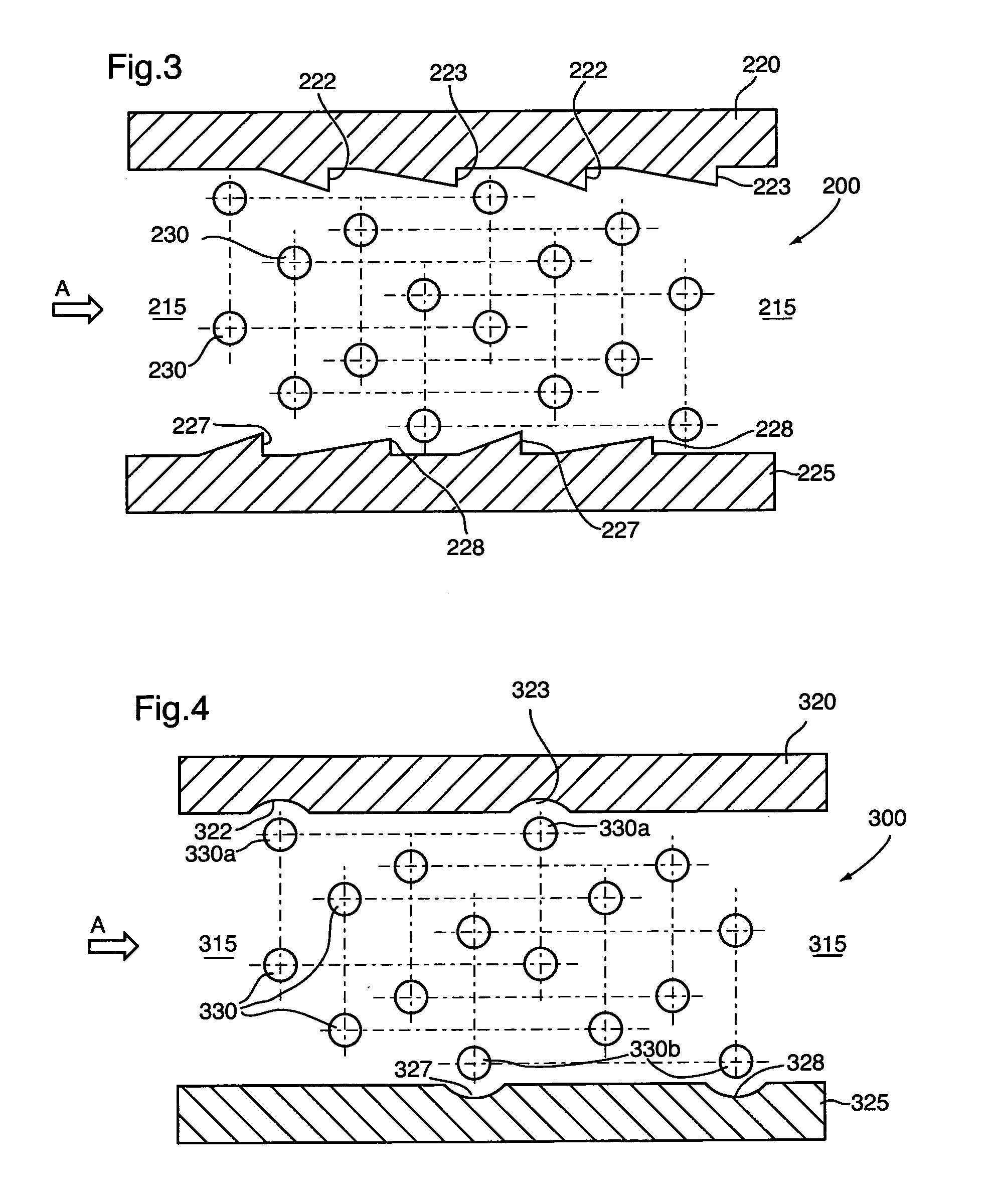Fluid treatment system
a treatment system and flue gas technology, applied in the direction of chemistry apparatus and processes, other chemical processes, separation processes, etc., can solve the problems of difficult access, relatively high capital cost of reactors, and radiation loss of hydraulic heads, so as to reduce radiation loss, reduce hydraulic head loss, and improve the effect of cost-effective manufactur
- Summary
- Abstract
- Description
- Claims
- Application Information
AI Technical Summary
Benefits of technology
Problems solved by technology
Method used
Image
Examples
Embodiment Construction
[0074]Prior to describing the preferred embodiments of the present invention, we will describe a prior art fluid treatment system such as the one taught in Blatchley described above.
[0075]With reference to FIG. 1, there is illustrated a fluid treatment system 10 comprising a channel 15. Channel 15 comprises a pair of sidewalls 20,25. Open channel 15 is configured to receive a fluid flowing in the direction of arrow A.
[0076]Sidewall 20 comprises a pair of fluid diverters 22. Sidewall 25 comprises a pair of fluid diverters 27. Disposed in open channel 15 is a plurality of vertical oriented radiation source assemblies 30.
[0077]As can be seen from FIG. 1, fluid diverters 22,27 have the same profile (i.e., triangular) and project into channel 15 to the same degree.
[0078]With reference to FIG. 2, there is illustrated a first preferred embodiment of a fluid treatment system 100 in accordance with the present invention. Fluid treatment system 100 comprises an open channel 115 and a pair of ...
PUM
| Property | Measurement | Unit |
|---|---|---|
| diameter | aaaaa | aaaaa |
| inlet velocity | aaaaa | aaaaa |
| distance | aaaaa | aaaaa |
Abstract
Description
Claims
Application Information
 Login to View More
Login to View More - R&D
- Intellectual Property
- Life Sciences
- Materials
- Tech Scout
- Unparalleled Data Quality
- Higher Quality Content
- 60% Fewer Hallucinations
Browse by: Latest US Patents, China's latest patents, Technical Efficacy Thesaurus, Application Domain, Technology Topic, Popular Technical Reports.
© 2025 PatSnap. All rights reserved.Legal|Privacy policy|Modern Slavery Act Transparency Statement|Sitemap|About US| Contact US: help@patsnap.com



